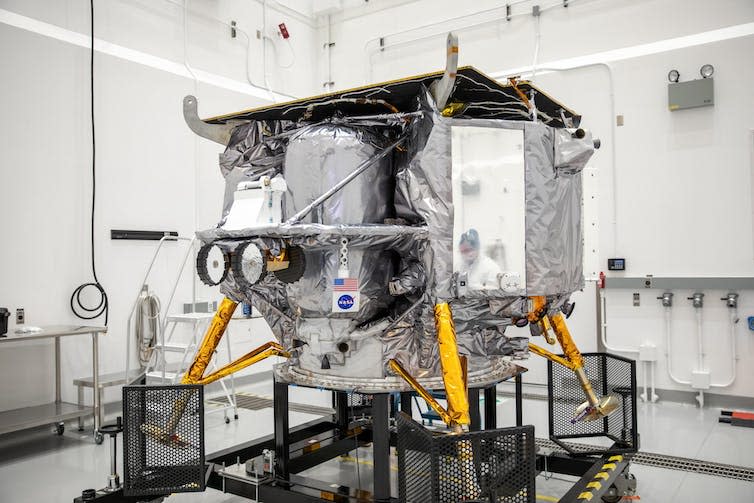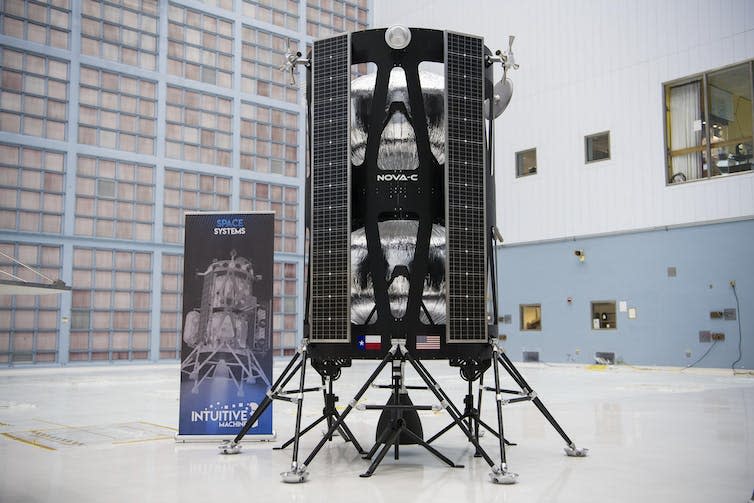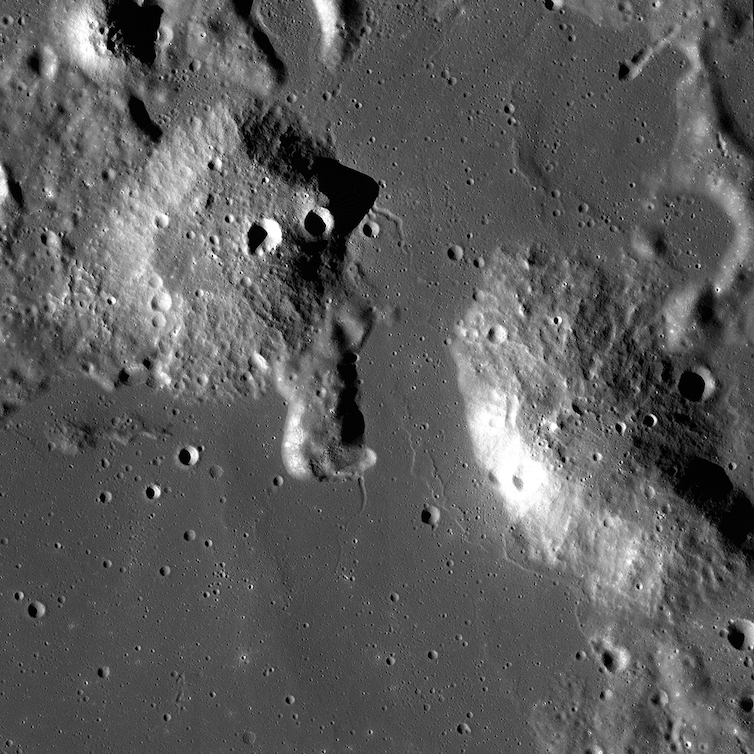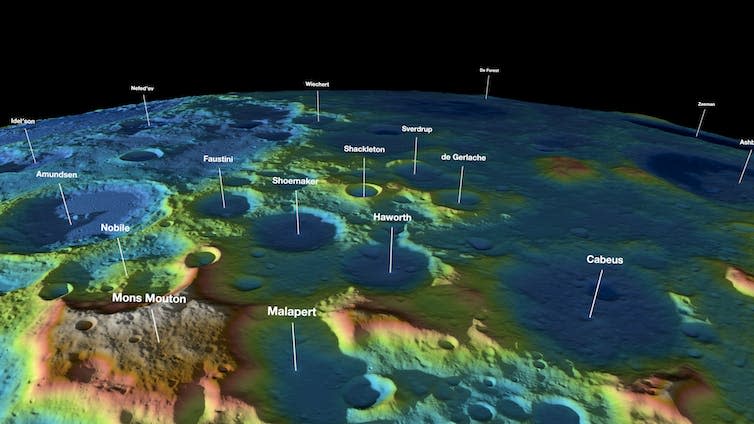Two commercial spacecraft are planned to be launched to the Moon in early 2024 under NASA’s initiative called Commercial Lunar Payload Service CLPS. The goal of this program is to launch a commercial transportation service that could carry NASA experiments and other payloads to the lunar surface.
If successful, these missions would represent the first landings on the Moon of spacecraft designed and flown by private companies. They could potentially usher in a new era of commercial exploration and science of the Moon.
CLPS was launched by NASA in 2018. An initial pool of nine companies received invitations to join the program. These included Astrobotic and Intuitive Machines, the two companies behind these missions. Both missions are expected to land within a week of liftoff.
The first launch and first NASA flight of 2024 is the Peregrine lunar lander, built by Pittsburgh-based Astrobotic. It is planned to be launched on January 8 at the earliest. Generally speaking, the lander is a box about the size of a medium-sized garden shed, containing several separate experiments.
These include a series of mirrors called a laser retro-reflector array, which are used to accurately position the lander from orbit. There are also a number of spectrometers that separate and measure the different colors found in light. These will measure radiation on the lunar surface and look for signs of water in lunar soil.
One of these, the Neutron Spectrometer System, will search for hydrogen-containing materials on the surface that could indicate the presence of water underground. This water could one day be used by human explorers.

There are two main sources of radiation dangerous to humans in space. One of these is the Sun, which releases electrons, protons, and heavier ions that are accelerated to a significant fraction of the speed of light.
These solar energetic particle events (SEPs) are more likely to occur during the peak of the Sun’s activity (solar maximum), which occurs every 11 years. However, this does not mean that there is a respite during solar minimum.
Another source of harmful radiation is galactic cosmic rays (GCRs). These energetic particles originate from outside the Solar System, possibly from explosive events such as stars exploding (supernovas).
During periods of low solar activity (including solar minimum), the Sun’s magnetic field throughout the Solar System weakens. This allows more GCRs to reach us.
Another spectrometer on Peregrine will measure both SEPs and GCRs on the Moon. This is important for studying how dangerous the radiation environment on the lunar surface will be to future human explorers.
polar descent
The second spacecraft to be launched in early 2024 is the Nova-C lander. It was designed by Houston-based Intuitive Machines and has a similar volume to the Peregrine but is shaped like a long, hexagonal cylinder. It will carry a variety of instruments, including its own laser retroreflector array. Nova-C is scheduled to be released in mid-February.
Other devices include a camera suite to create a 3D image of Nova-C’s landing site. This will allow scientists to estimate how much material is blown away from the landing rocket’s exhaust plume during descent. Potentially, any material that flies away can be imaged to gain insight into the composition of the surface material.


The instrument “Radio observations of the lunar surface photo-electron sheath” (Rolses) is designed to measure how the extremely weak Lunar atmosphere and the dust environment on the Moon’s surface affect radio waves.
The behavior of electrically charged dust particles on the Moon is a technical challenge that future explorers must grapple with; as abrasive particles can adhere to surfaces and mechanical devices and potentially cause harm when inhaled by astronauts.
One experiment specifically built at Nova-C is the International Lunar Observatory ILO-X, which aims to capture some of the first images of the Milky Way galaxy from the Moon’s surface. This will introduce the concept of lunar-based astronomy.
landing sites
Peregrine’s landing site is a bay on the western side of Mare Imbrium, known as Sinus Viscositatis (Bay of Stickiness). The two volcanic mountains here, called the Gruithuisen Domes, are made of a different material than the surrounding plains.
The plains are a type of basalt, while the domes are composed of silica. Both are of volcanic origin, but one appears to consist of lava with the viscosity of mango pickle (silica) and the other of more fluid lava (basalt).


On Earth, silica lavas typically require the presence of both water and plate tectonics. However, it is not known whether plate tectonics is present on the Moon and that the required amount of water for silica lavas is also present. So the Gruithuisen Domes present a geological mystery that Peregrine can solve.
Nova-C’s landing site is Malapert A crater; this is of particular interest for lunar research due to its proximity to the Moon’s south pole. The surrounding mountains constantly shield this depression from sunlight, leaving it in constant darkness.
As a result, it is one of the coldest places in the Solar System, and a place where, given the lack of sunlight, water ice brought by comets hitting the surface can remain stable for eons. Future human explorers could use it to make life support and rocket fuel.


Both spacecraft have additional payloads from private investors. Peregrine includes “DHL Spacebox” which will carry personal belongings of paying customers, while Nova-C contains “The Humanity Hall of Fame”, a list of names that will be sent to the Moon for generations to come. Such payloads could provide additional funding for launch companies.
Over the next few years, many other companies will send their first payloads to the Moon. With more contributions from private companies (assuming the first few missions are successful), we may soon witness a new era in lunar exploration.
This article is republished from The Conversation under a Creative Commons license. Read the original article.


The authors do not work for, consult, own shares in, or receive funding from any company or organization that would benefit from this article, and have disclosed no relevant affiliations beyond their academic duties.